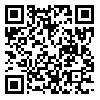BibTeX | RIS | EndNote | Medlars | ProCite | Reference Manager | RefWorks
Send citation to:
URL: http://ijhe.tums.ac.ir/article-1-5484-en.html
2- Department of Environmental Health Engineering, School of Public Health, and Center for water Quality Research (CWQR), Institute for Environmental Research (IER), Tehran University of Medical Sciences, Tehran, Iran. ,
3- Center for Solid Waste Research (CSWR), Institute for environment Research, Schools of Public Health, Tehran University of Medical Sciences, Tehran, Iran
4- Department of Occupational Hygiene, Professor, School of Public Health, Tehran University of Medical Sciences, Tehran, Iran
Background and Objectives: Due to the increasing use of mobile phone in recent years, the number of BTS antennas has also increased. .Proliferation of BTS antennas in cities and villages, and perpetuation of encountering with waves from one side and increasing the anxiety of many people in encountering with their waves from the other side convinced more investigations in this field. Therefore, the purpose of this study was to investigate the propagation of microwave around the BTS antennas of Maragheh and to compare power density measurements with allowable environmental standards.
Material and Methods: In this research, the frequency of BTS antennas was determined through field monitoring. Then, measurements were performed using a calibrated Spectran 4060 and the standard method IEEE Std C95.1 was adopted in close and far fields from each antenna. Then, the obtained data were analyzed after entering to SPSS environment. In this study, the Kolmogrov-Smirnov test, Kruskal-Wallis, and Mann-Whitney tests were used.
Results: This research found that in both Irancel and Hamrah Aval operators, the power density increased with distance in close fields and decreased in far fields. Moreover, at the distance of 20 meter, the maximum value of power density was measured. Significant difference between these distances was observed (P-value ≤0.05).
Conclusion: Out of 1804 cases in far and close fields, the highest power density measured at 900 MHz band was 4.51 mW/m2, which is in accordance with 0.1% permissible exposure.
Received: 2015/06/15 | Accepted: 2016/03/2 | Published: 2016/03/2
| Rights and Permissions | |
 |
This work is licensed under a Creative Commons Attribution-NonCommercial 4.0 International License. |





